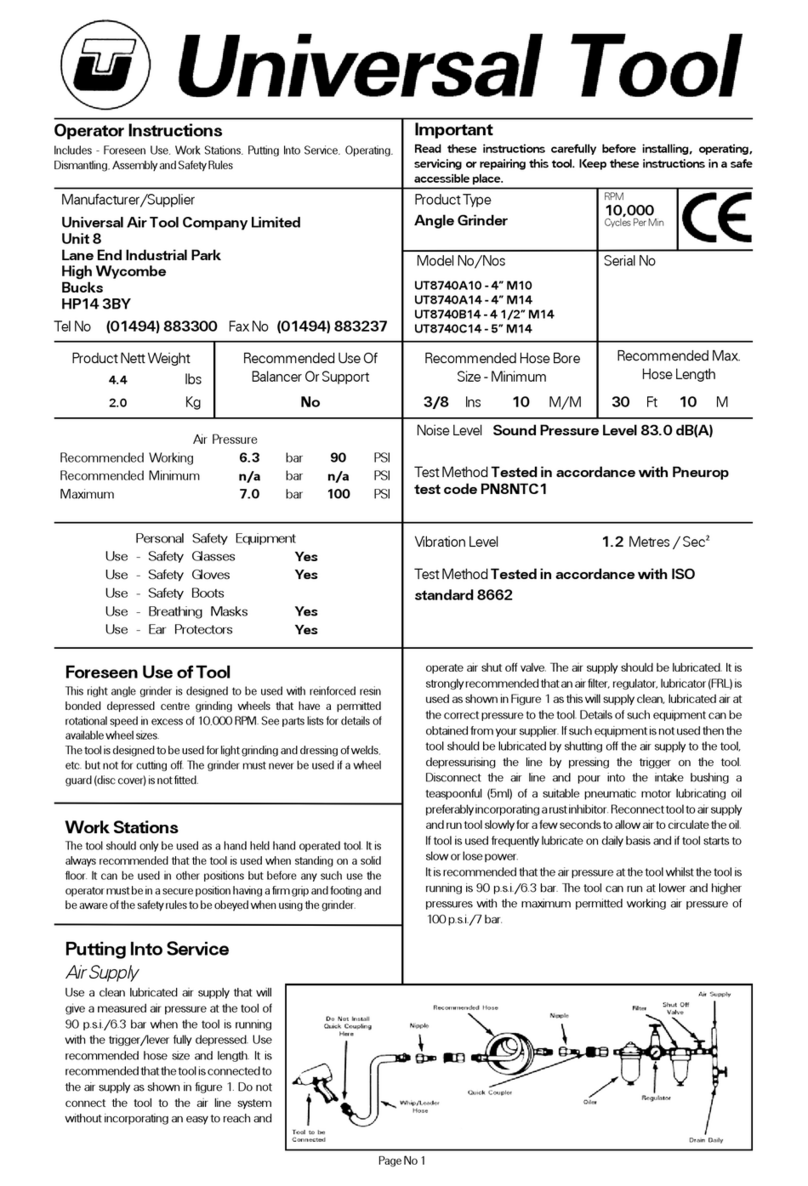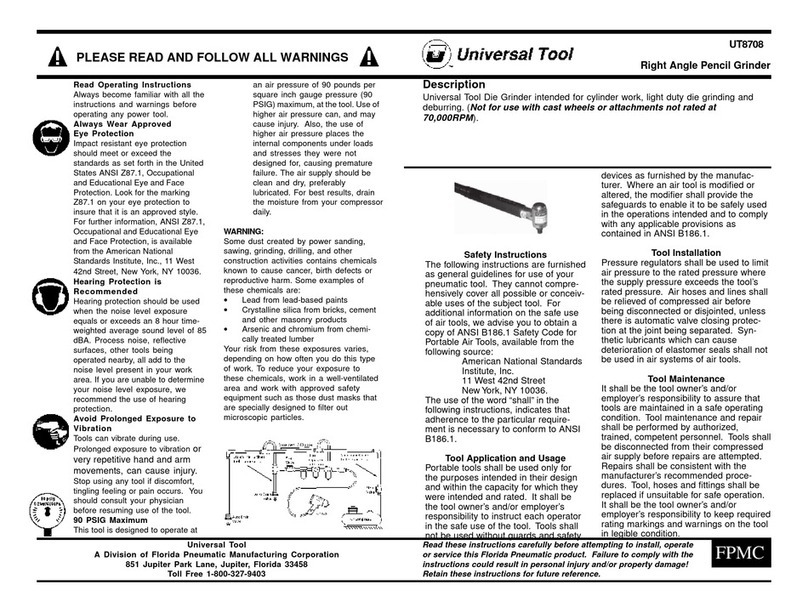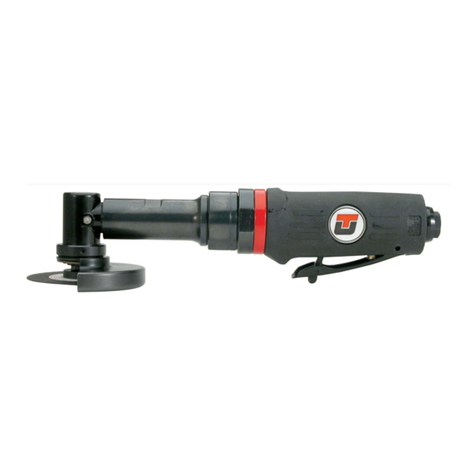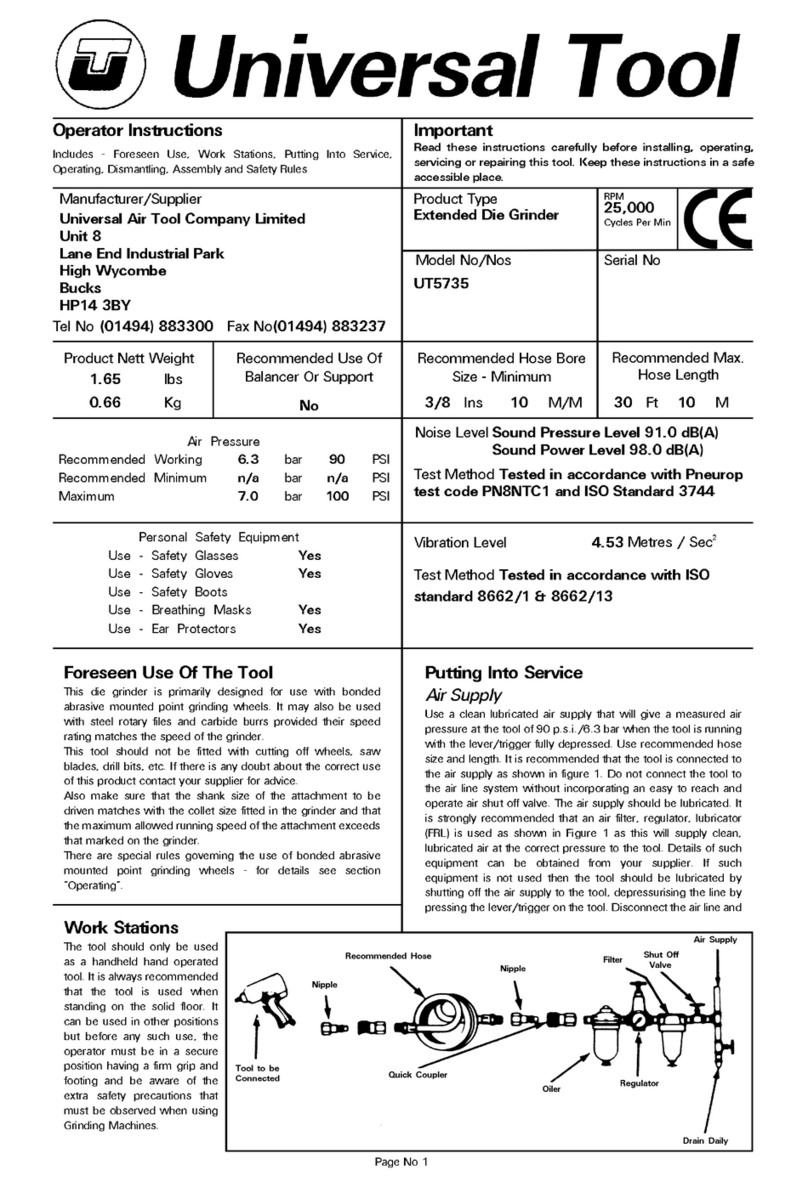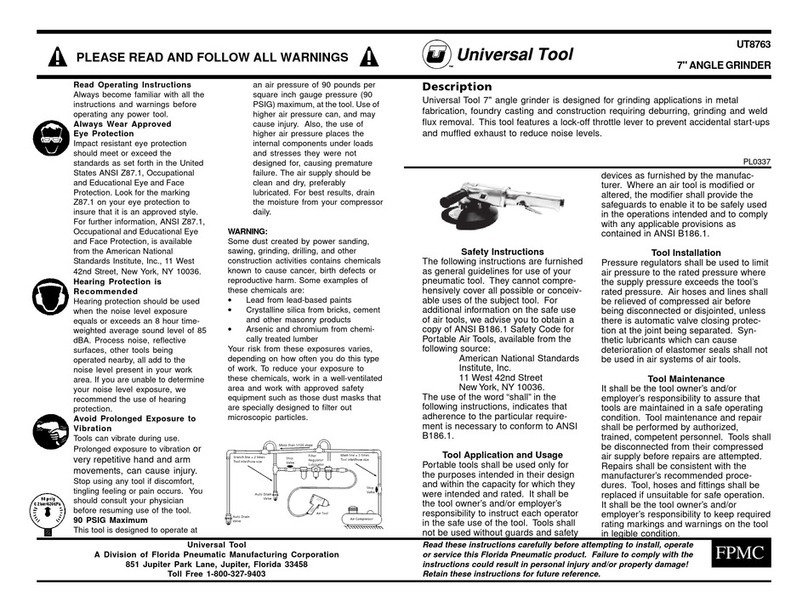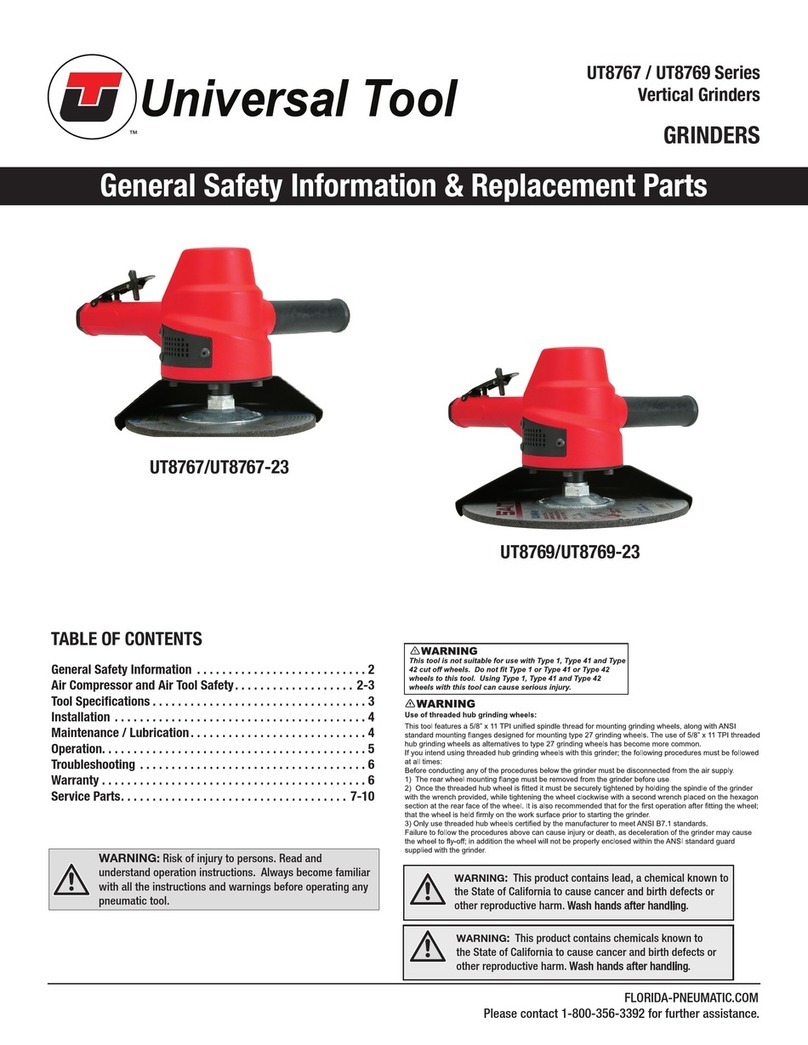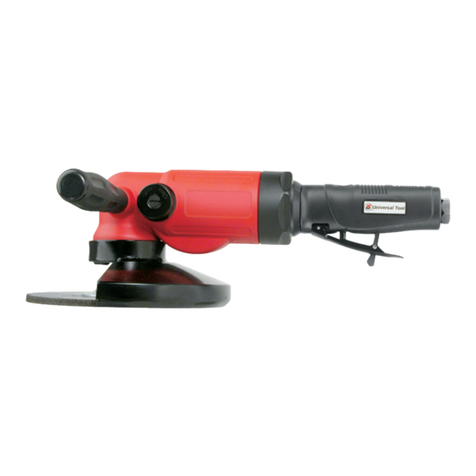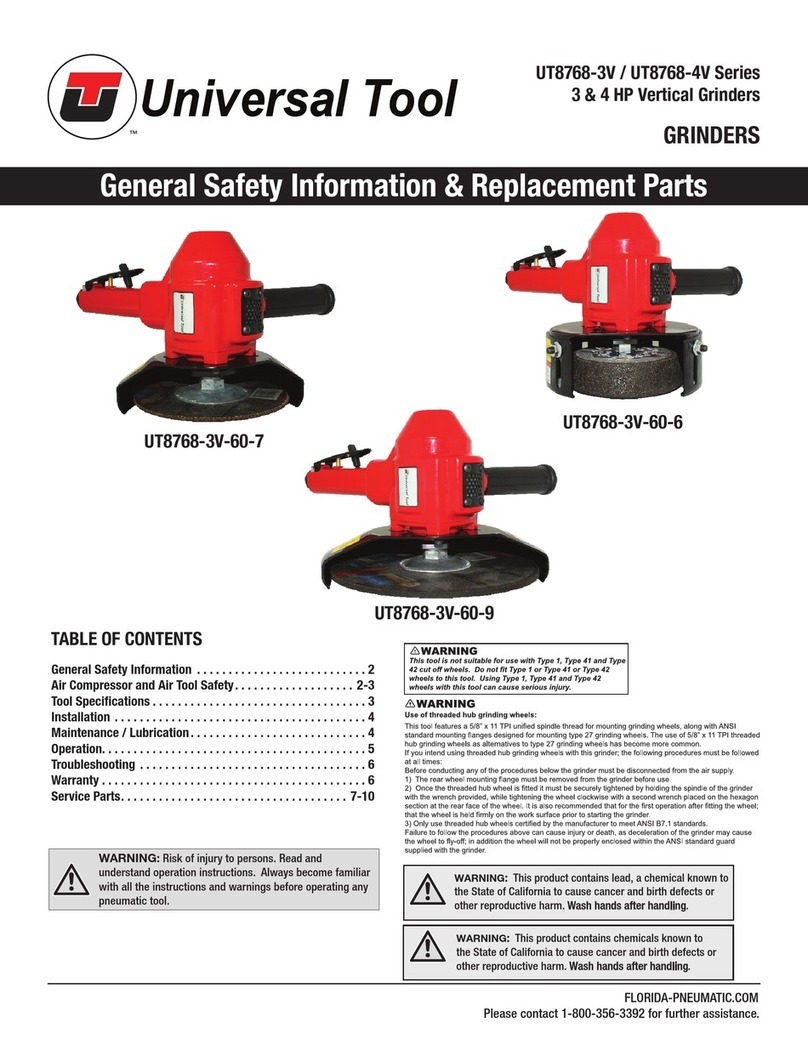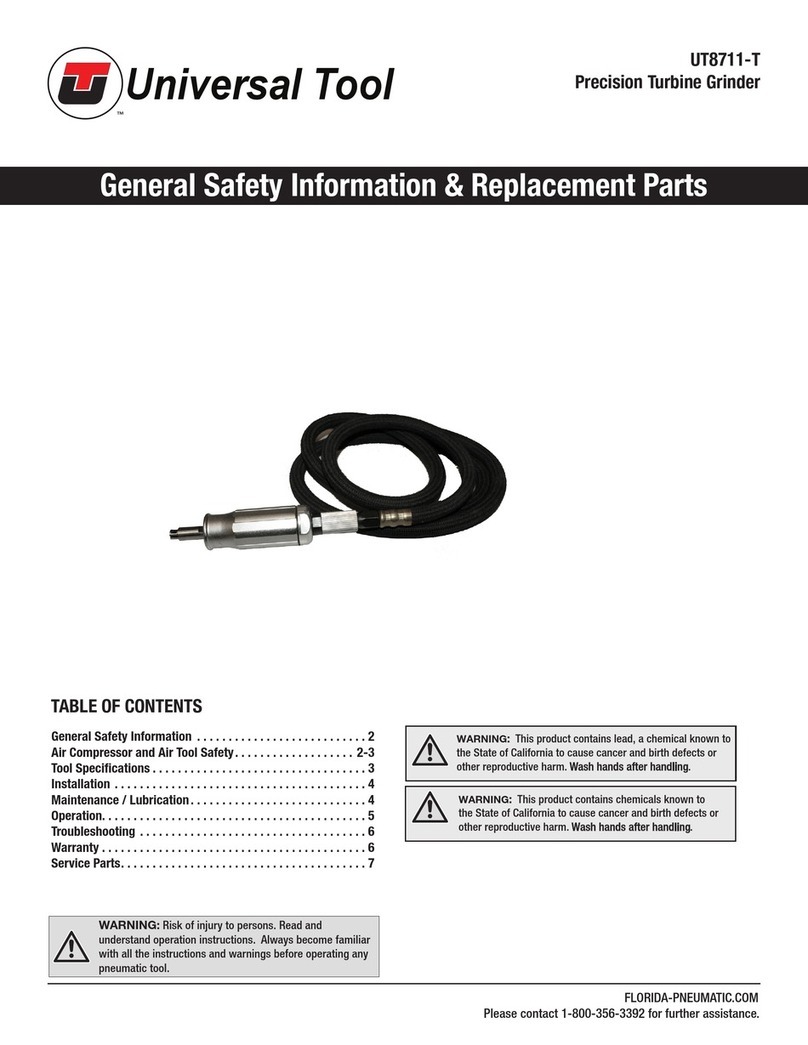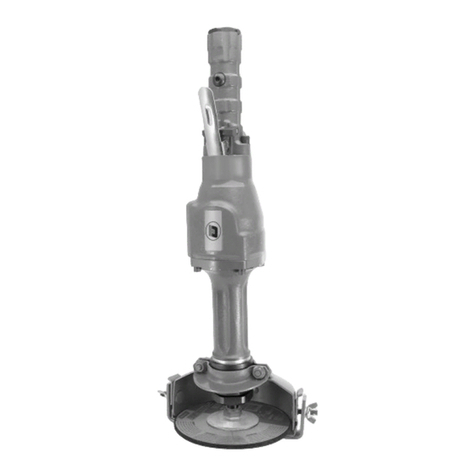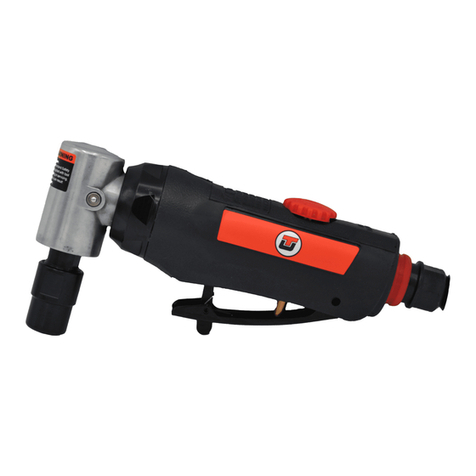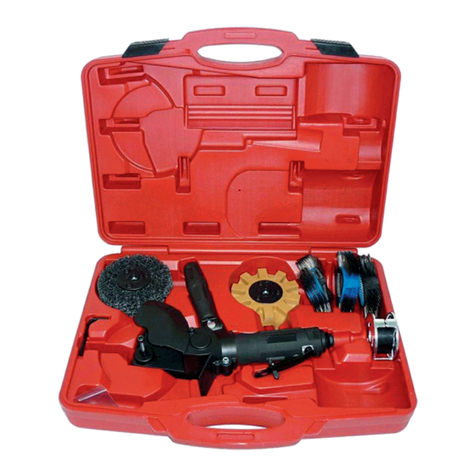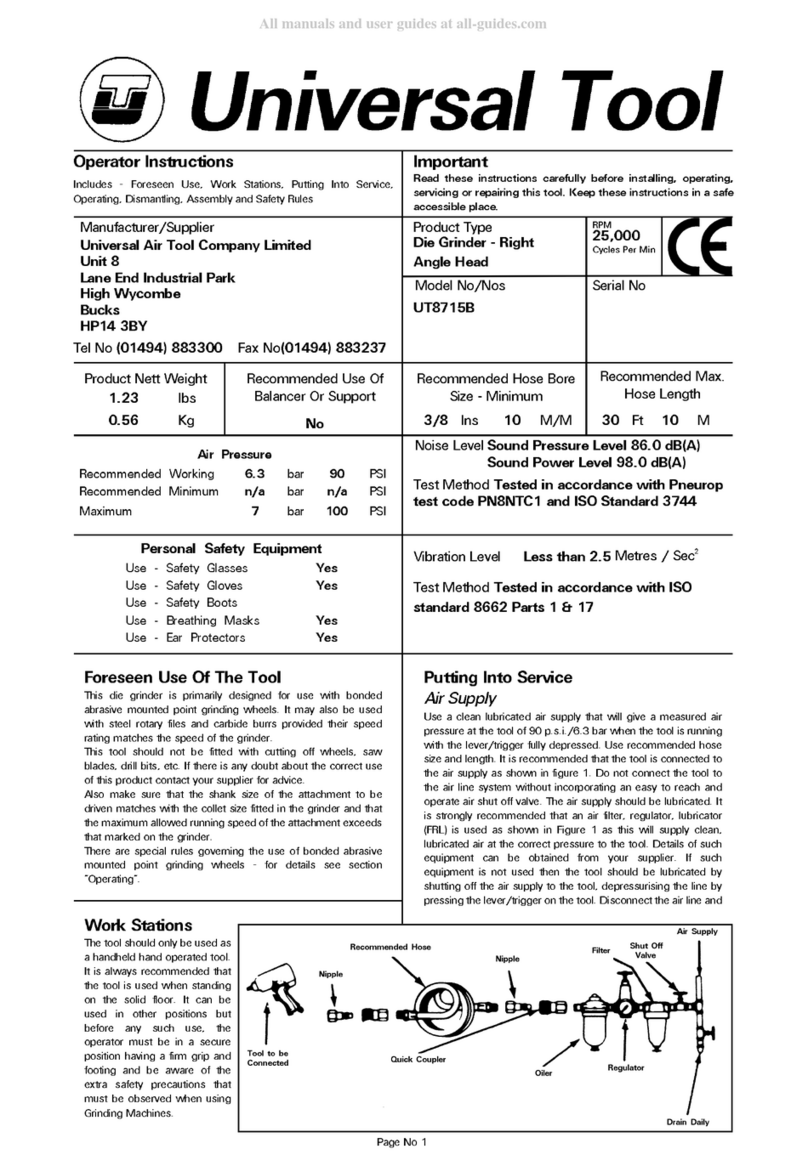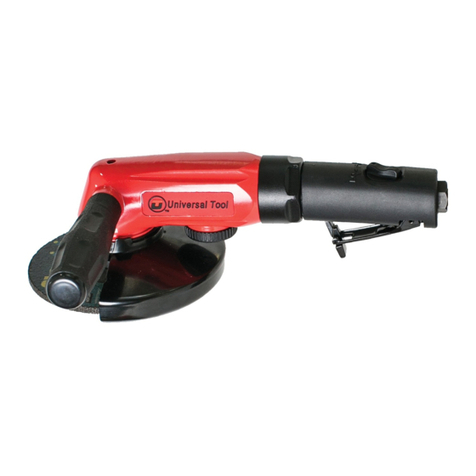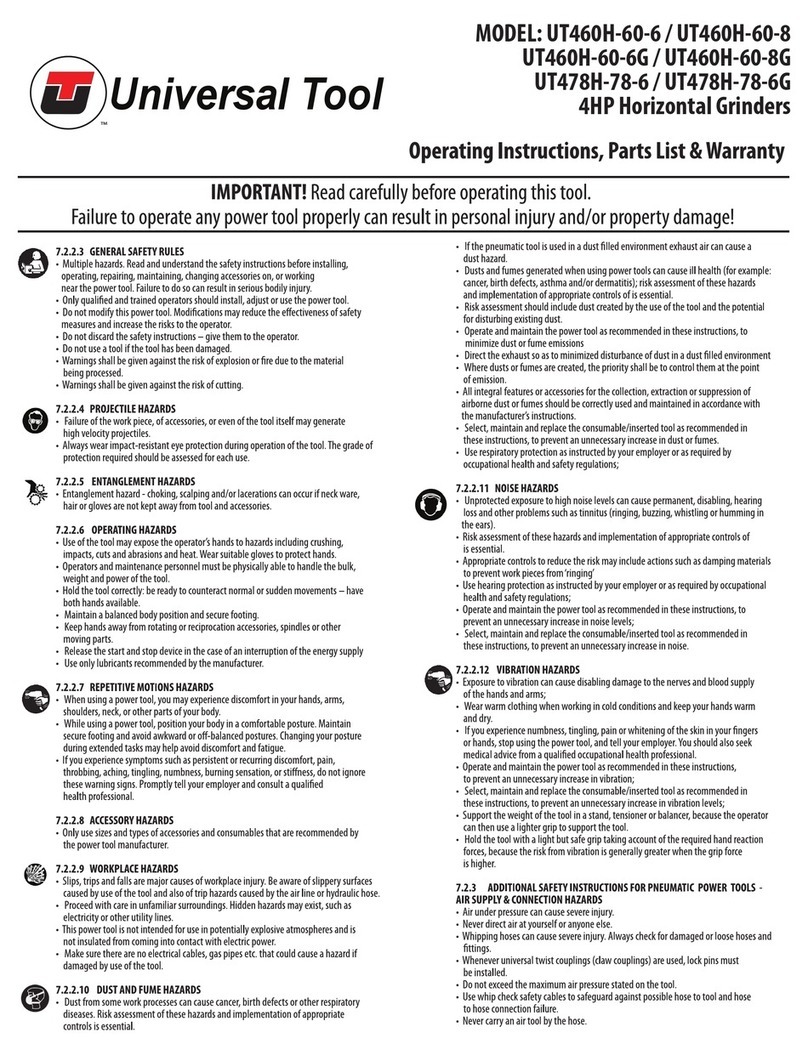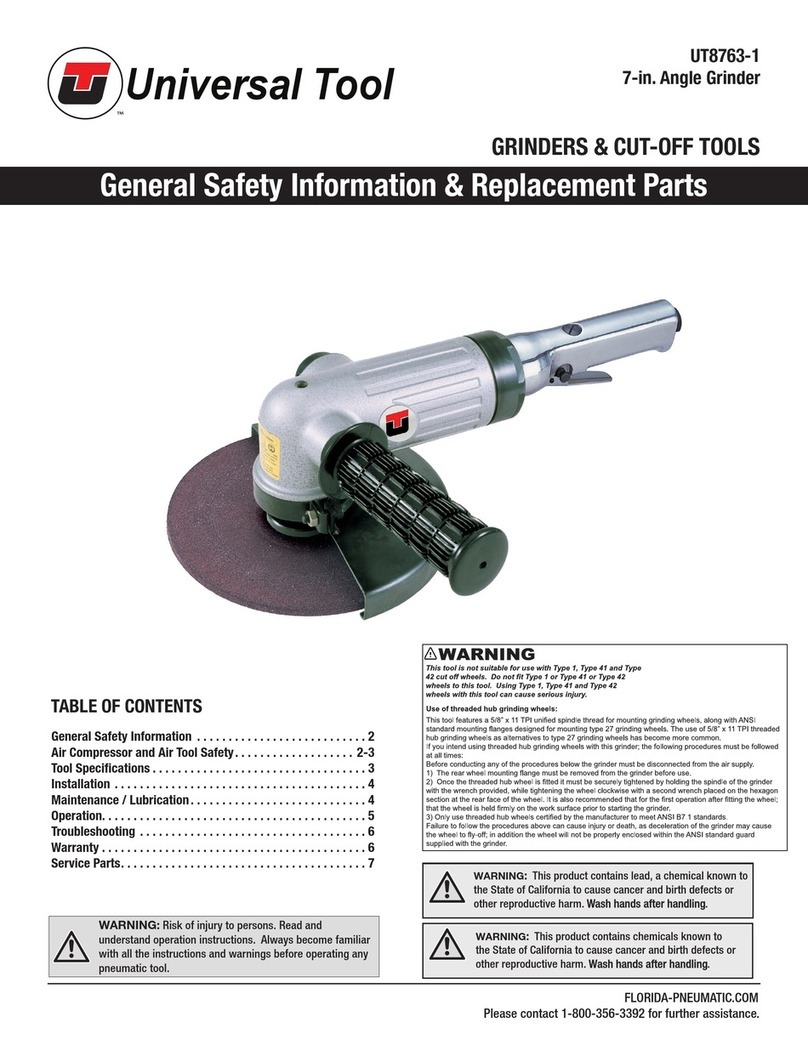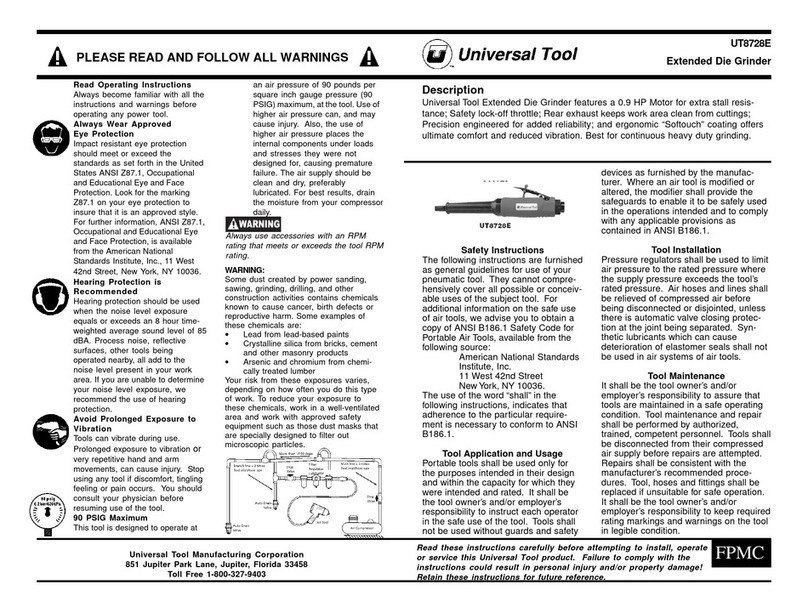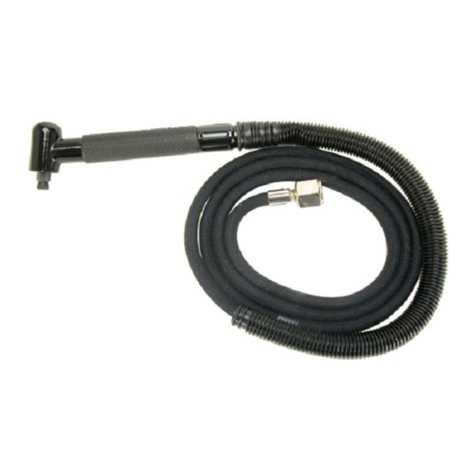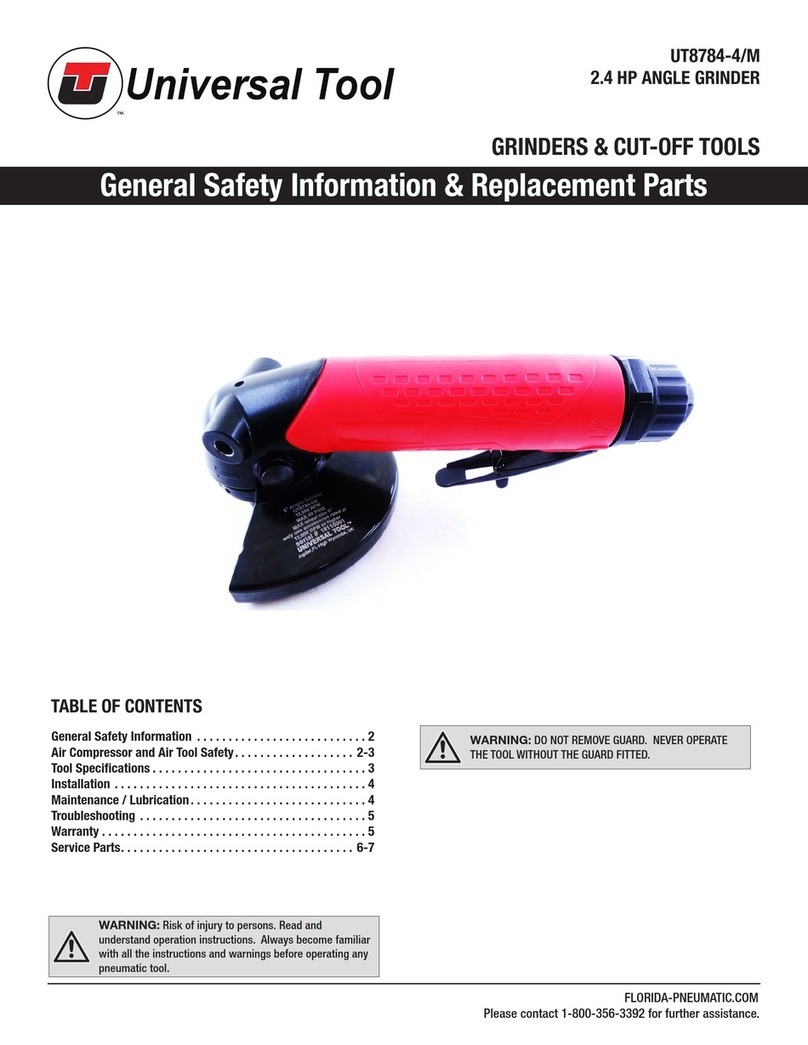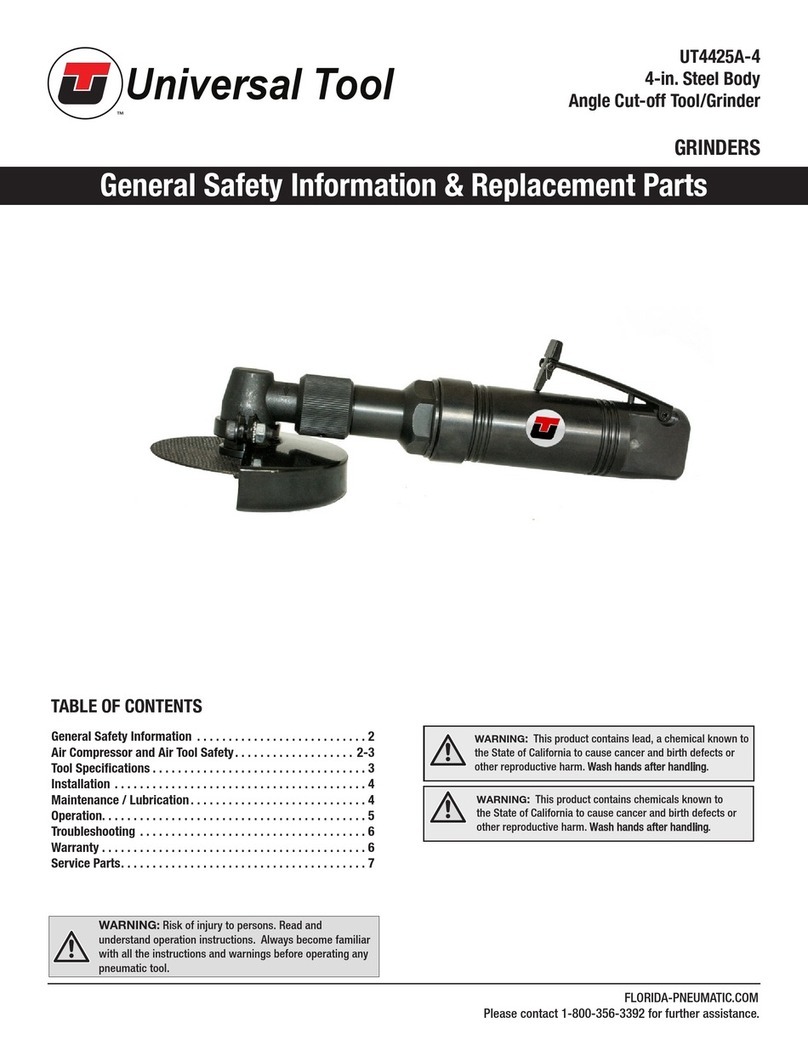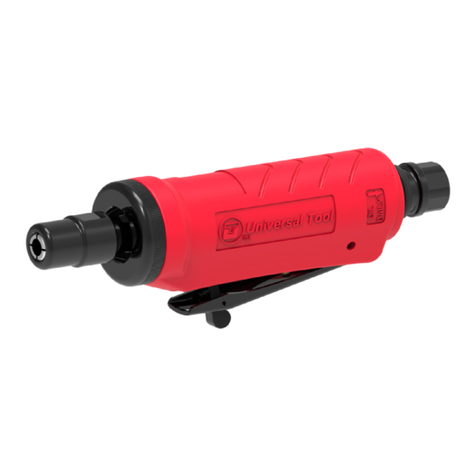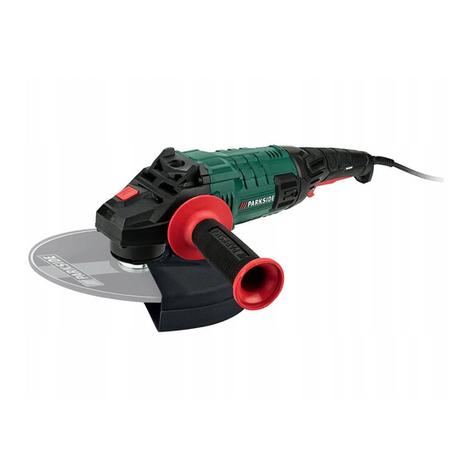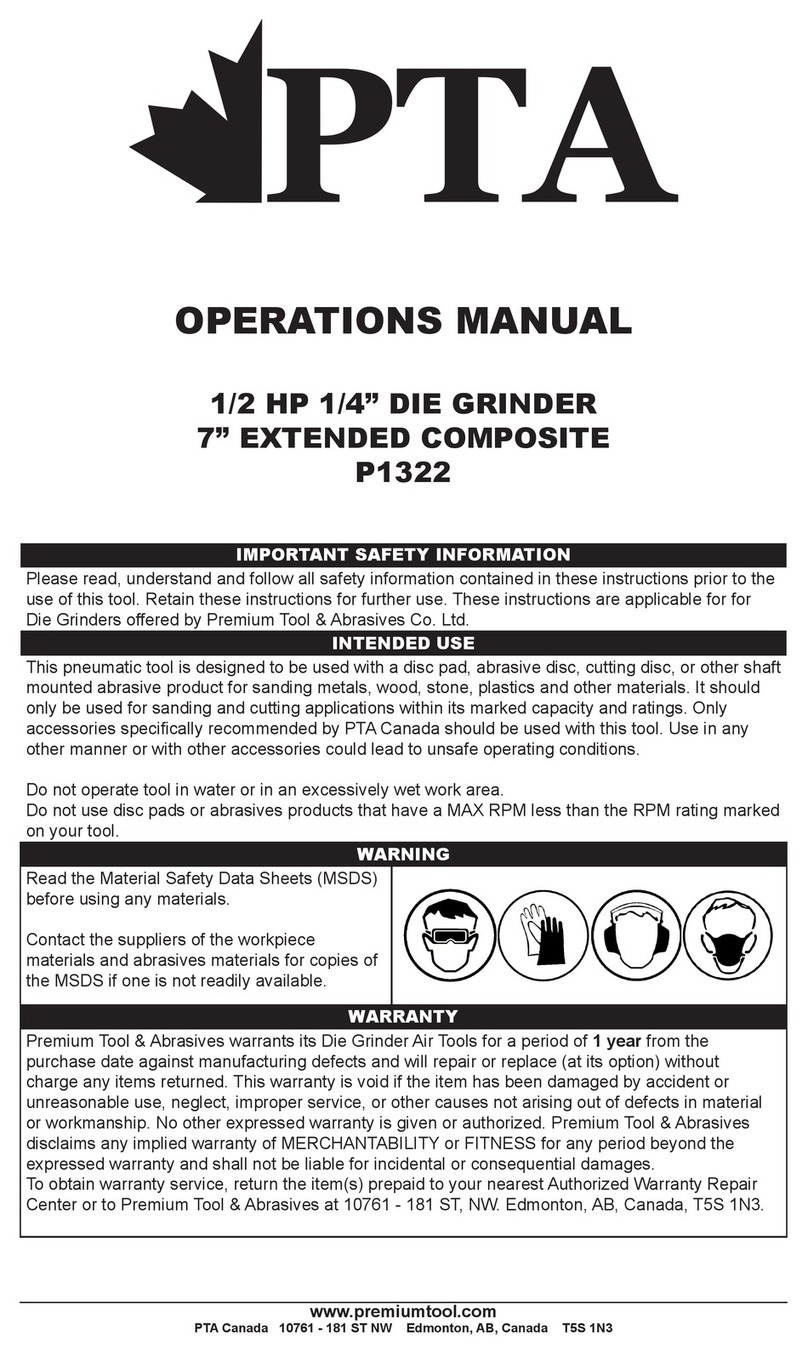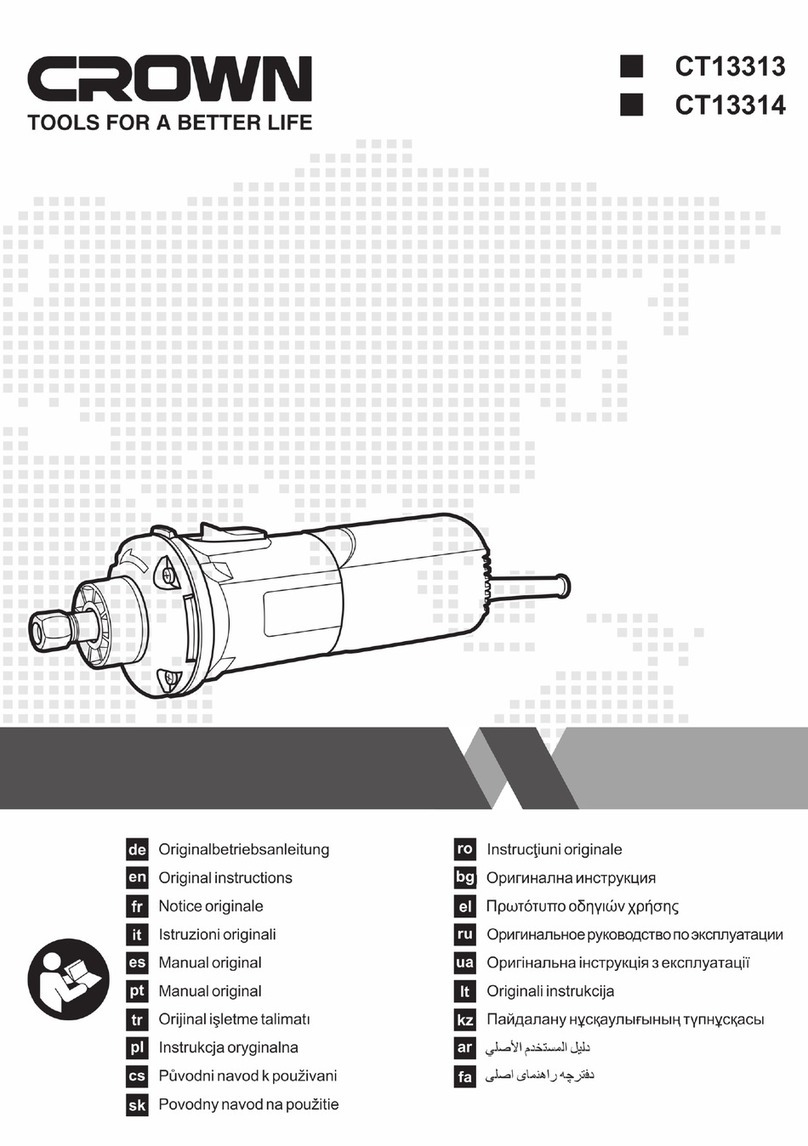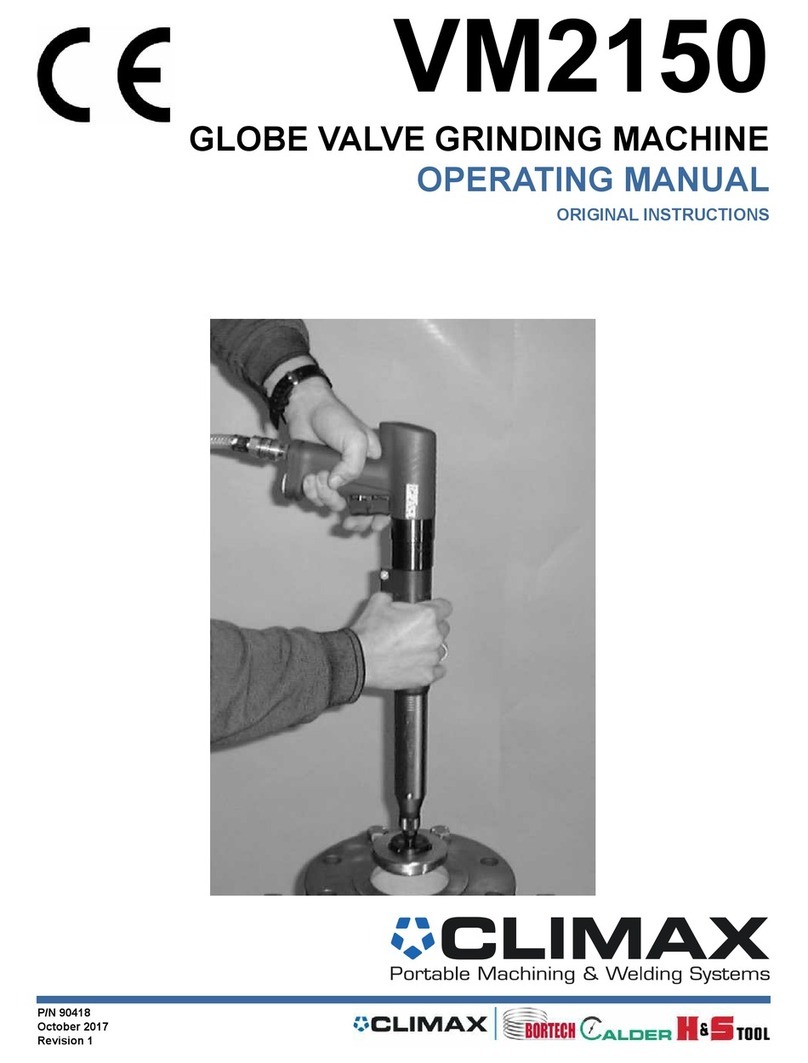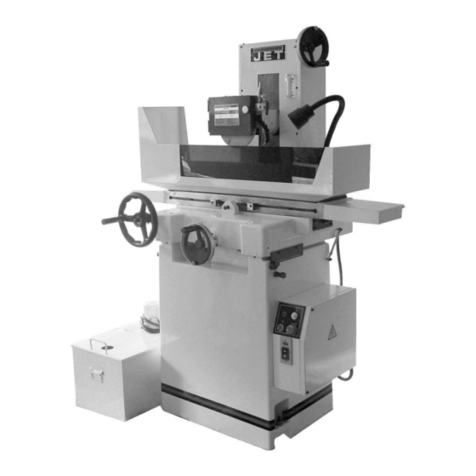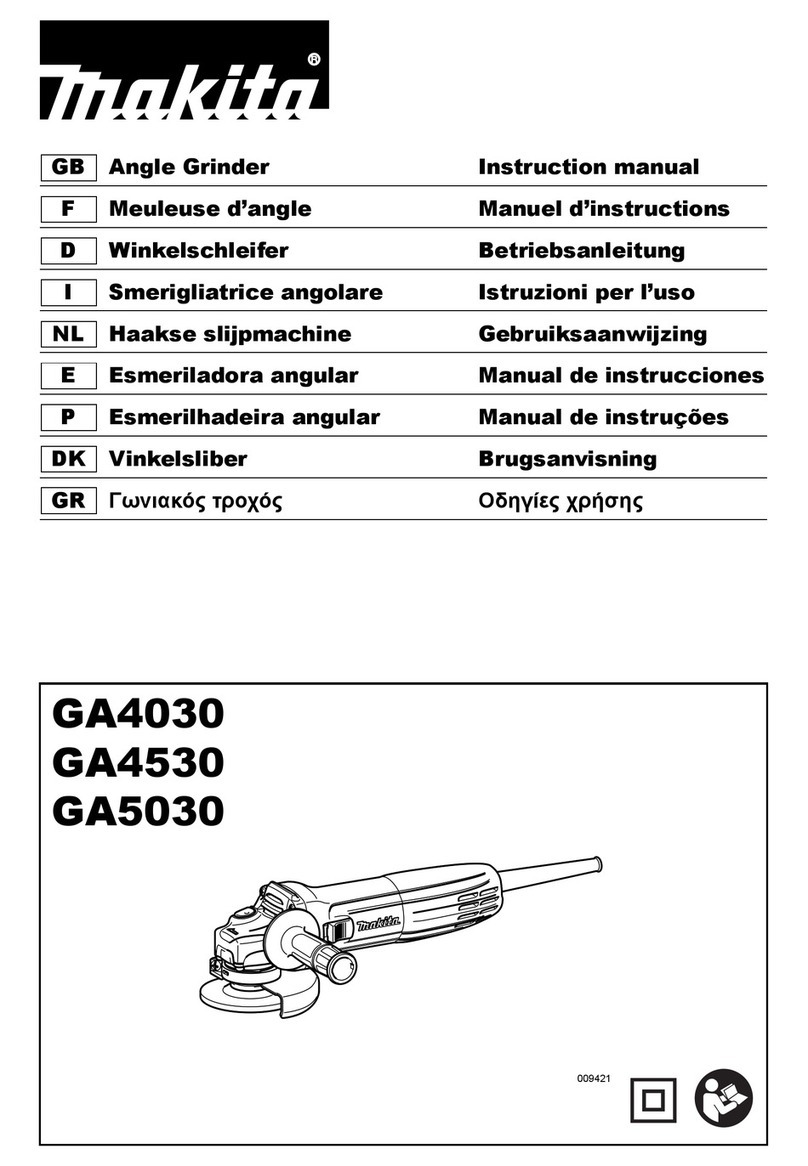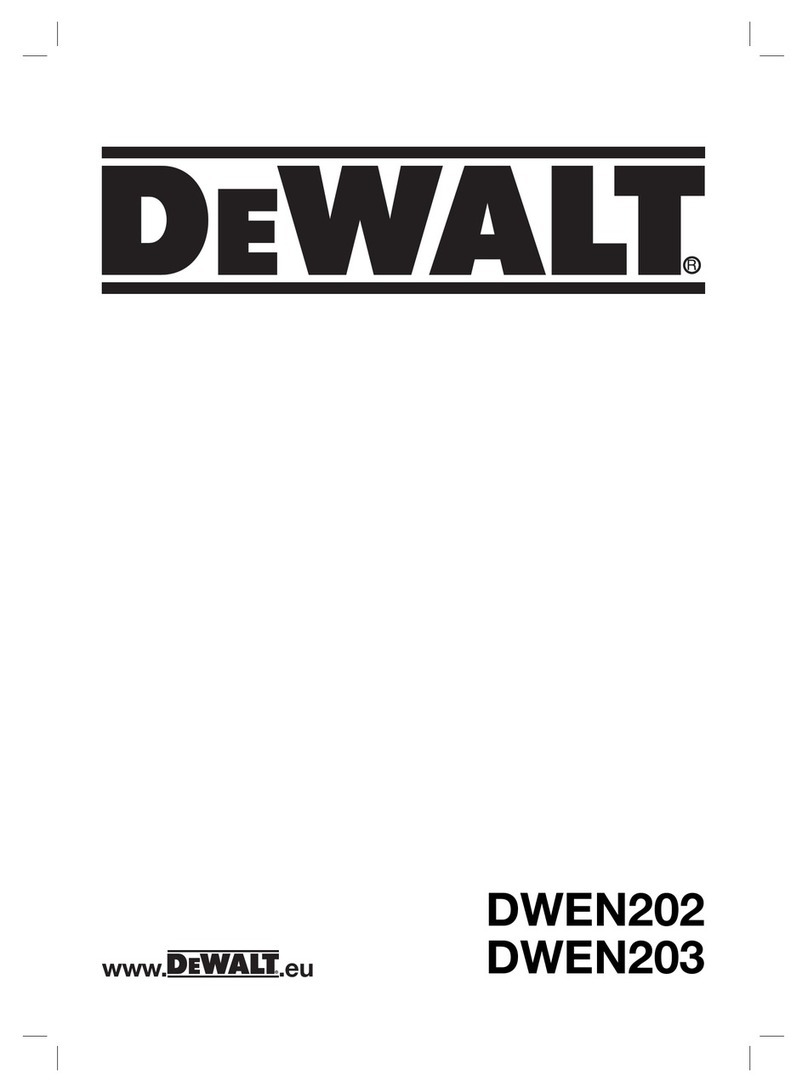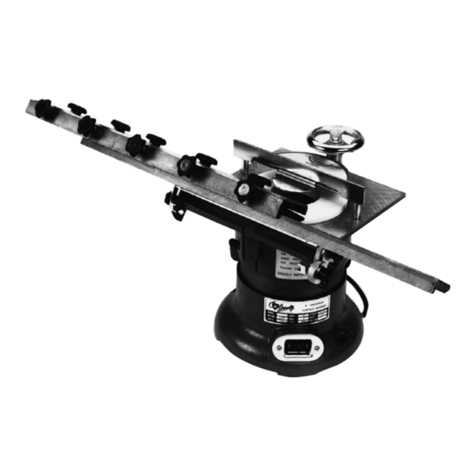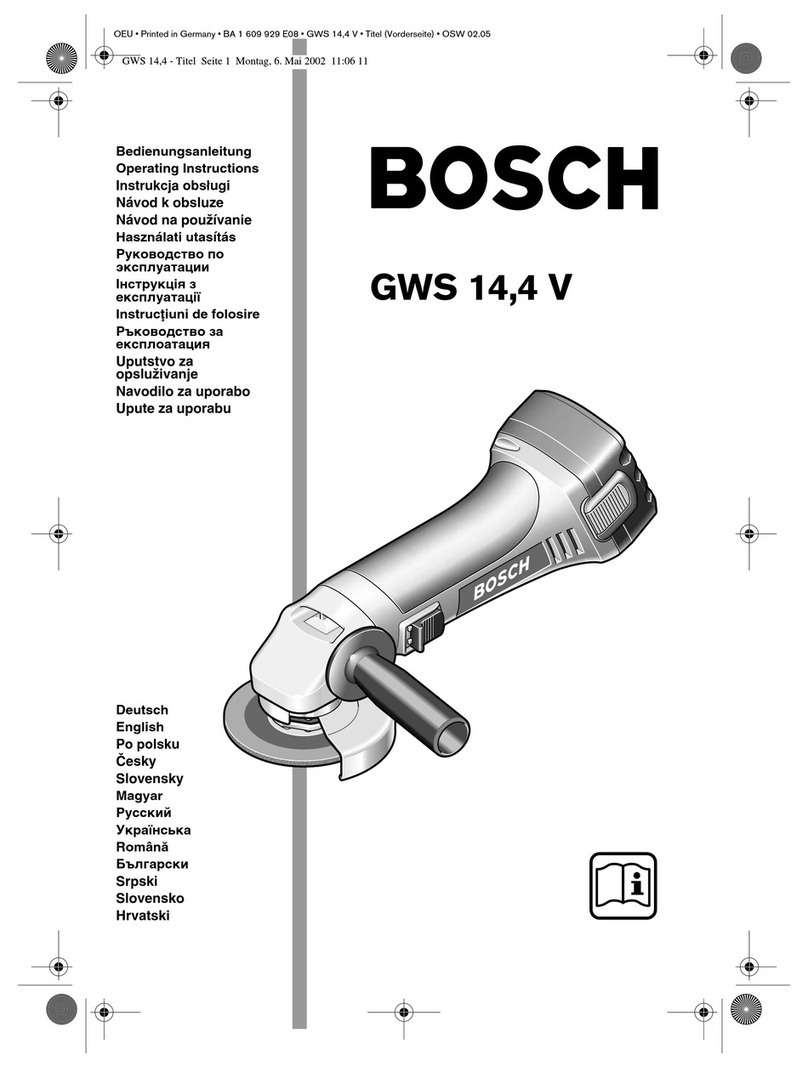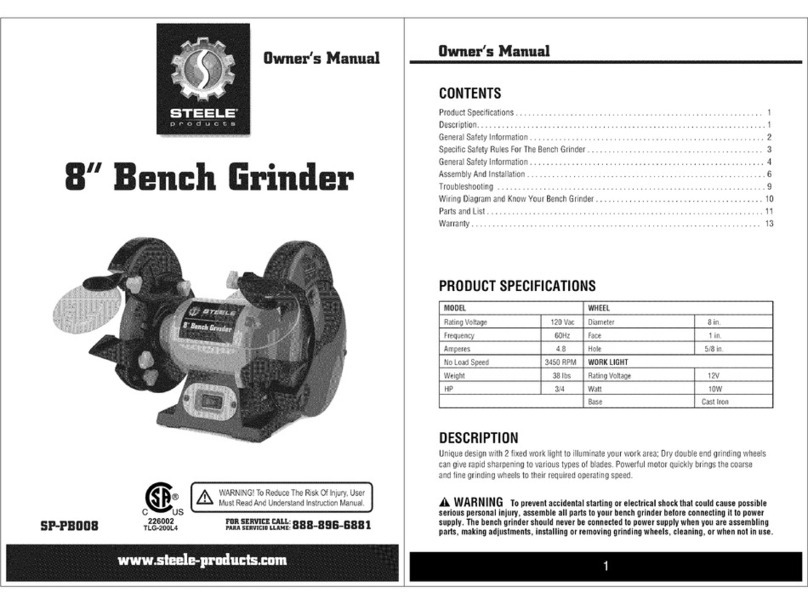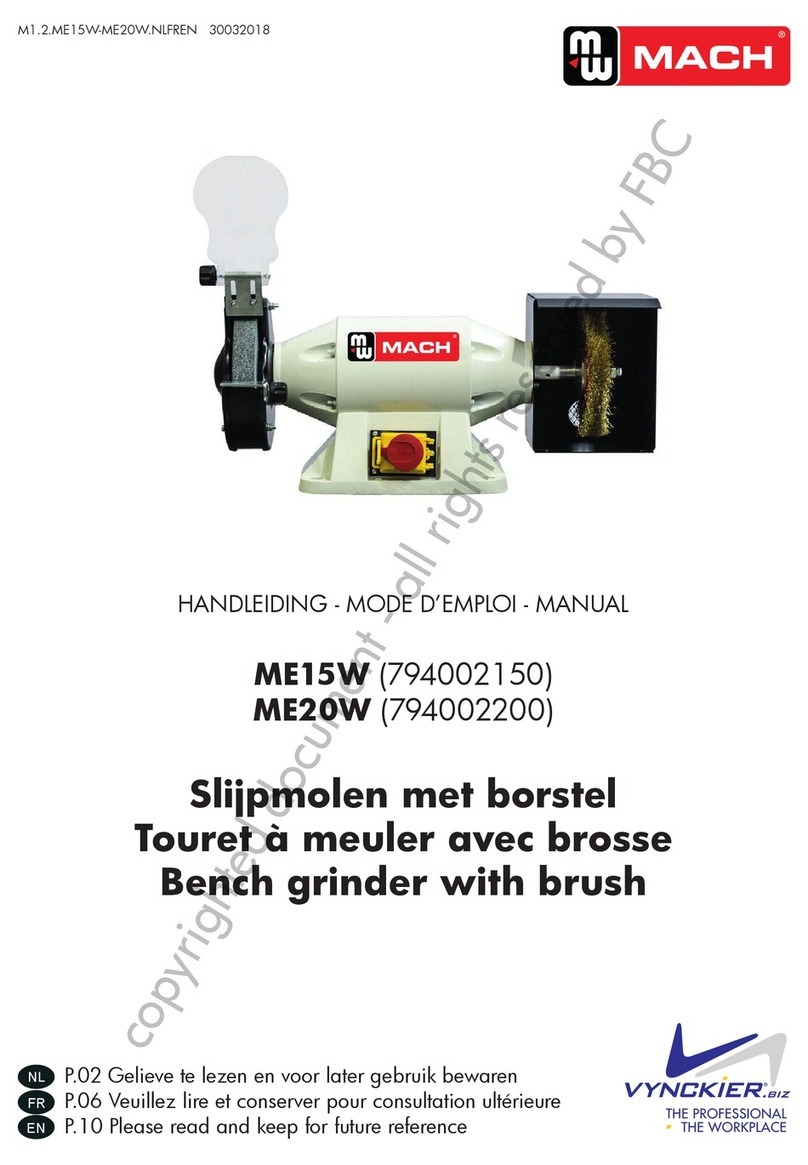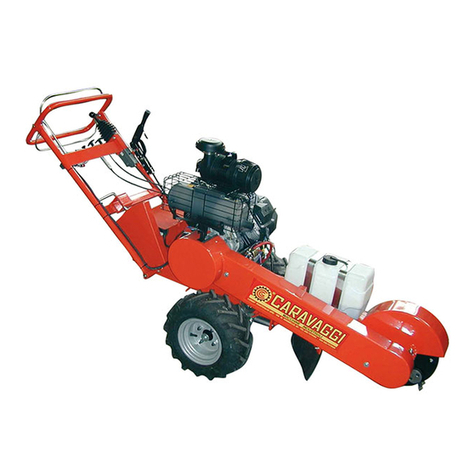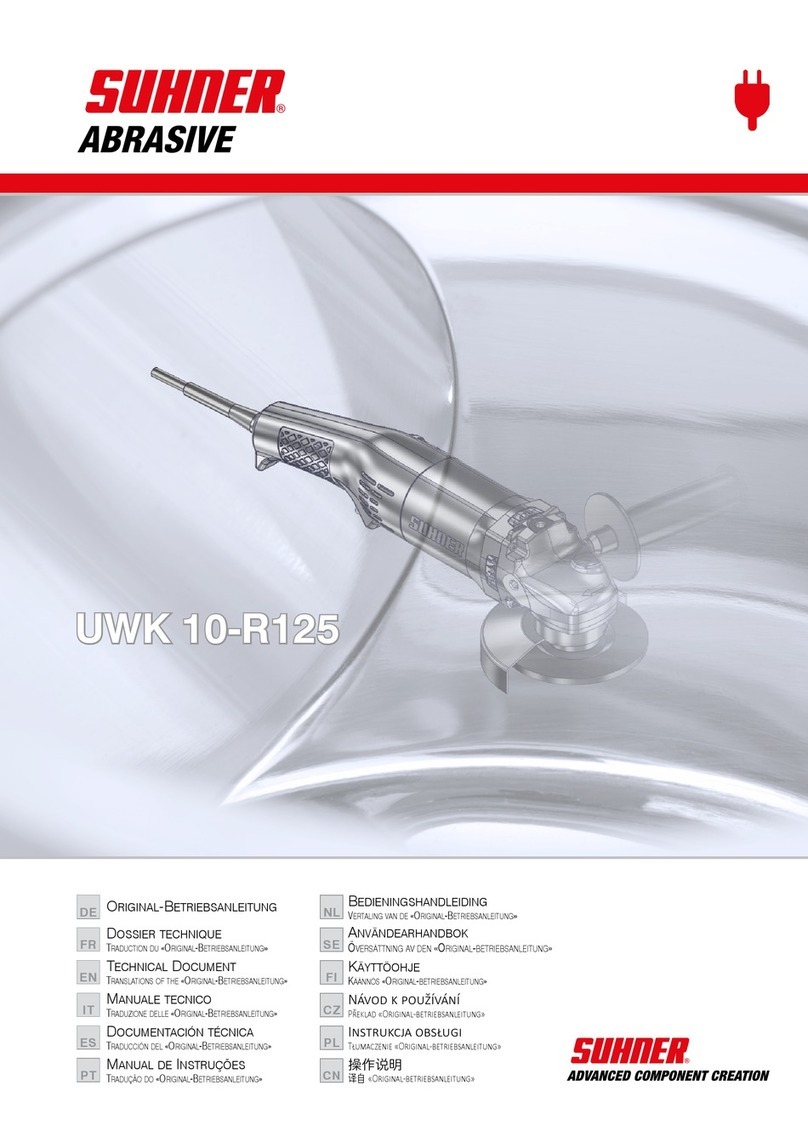
Page No 2
Safety Rules For A Grinder
1)Readalltheinstructionsbeforeusingthistool.Alloperatorsmustbe
fully trained in its use and aware of these safety rules.
2) Do not exceed the maximum working air pressure.
3) Use personal safety equipment.
4) Use only compressed air at the recommended conditions.
5) If the tool appears to malfunction remove from use immediately
and arrange for service and repair.
6) If the tool is used with a balancer or other support device ensure
that it is fixed securely.
7)Alwayskeephandsawayfromtheworkingattachmentfittedtothe
tool.
8)Thetoolisnotelectricallyinsulated.Neverusethetoolifthereisany
chance of it coming into contact with live electricity.
9) Always when using the tool adopt a firm footing and/or position
andgripthetoolfirmlytobeabletocounteract anyforces orreaction
forces that may be generated whilst using the tool.
10) Use only correct spare parts. Do not improvise or make
temporary repairs.
11) Do not lock, tape, wire, etc. the on/off valve in the run position.
Thetrigger/leveretc.mustalwaysbefreetoreturntothe‘off’position
when it is released.
12) Always shut off the air supply to the tool, and depress the
trigger/lever etc. to exhaust air from the feed hose before fitting,
adjusting or removing the working attachment.
13)Check hose and fittingsregularlyforwear. Replace if necessary.
Do not carry the tool by its hose and ensure the hand is remote from
theon/offcontrolwhencarryingthetoolwiththeairsupplyconnected.
14) Take care against entanglement of moving parts of the tool with
Operating
With the grinder correctly connected to the air supply, check the
speed of the grinder with an inlet pressure of 100 psi/7.0 bar
measuredatthetoolinlet.Checkwithacalibratedtachometer.Check
thattheguardisinpositionandsecurelyfixed.Checkthatthegrinding
wheel is of correct dimensions, is not cracked or chipped and has a
permittedspeedratinghigherthanthemaximumpermissiblerunning
speed of the grinder which is 12,000 RPM. Check that item 5 disc
receiver is the correct type as parts list and is screwed tightly to the
shaft and locates the bore of the grinding wheel on the spigot of the
disc receiver and screw on disc nut item (4) using the spanners
provided.Donotovertightenasthiscouldcrackthe wheel.Itshould
betight enough to prevent wheel spin off when the air supply is shut
off.
Whenfirststartingthegrinderwithaneworchangedwheelfitted,the
grinder should first be started in a protected area, i.e. such as under
a heavy bench well away from other persons and run for, say, one
minute.Thiswillprovideprotectionifthewheelshouldbreakbecause
some fault was not detected.
Always use eye protection and wear protective gloves if there are
sharp edges in the working area. The tool and the grinding process
can create a noise level such that ear protectors should be worn.
If the grinding process creates a dust then use a suitable breathing
mask.
Check that the material being worked will not cause harmful dust or
fumes.Ifthisissothenspecialbreathingapparatusmayberequired.
Seek advice before starting work.
Ifthegrindervibrateswhenfirstfittingthewheelorduringuse,remove
from service immediately and arrange for the fault to be corrected
before continuing to use.
Do not apply excessive pressure as this will reduce the cutting
efficiency. Apply light loads and allow the wheel to cut.
Handle the grinder with care. If the grinder is dropped, carefully
examine the wheel for damage and replace if necessary. Start the
machine as if for the first time of fitting a wheel, i.e. under a bench.
Make sure the object to be ground is in a firm fixed position.
Dismantling & Assembly Instructions
Disconnect tool from air supply.
Gripgearshaft(11)withspanner(41)andinsertspanner(40)intothe
holes in disc nut (4), unscrew disc nut (4) and take off grinding disc
(34)anddisc receiver (5), remove 4 off screws (37) and take off disc
cover(3),retainer(7)andgasket(8).Pulloutthedriveshaftassembly
from body (1). Unscrew grip (6) from body (1) and remove 2 off
screws (16) and take off exhaust cover (48). Remove spacer (14).
Support bearing (14) and tap the non threaded end of the gear shaft
(11) to drive it through the bearing (14). Take off retaining ring (13)
from gear shaft (11) and support bearing (9) on the threaded shaft
side and press the non threaded end of gear shaft (11) through the
assemblytoseparategearshaft(11),key(12),bearing(9),bevelgear
(10) and wave washer (43).
By holding body (1) in a vice fitted with soft jaws the control head
assembly may be removed from body (1) by unscrewing lock ring
(50). It is then possible to pull out the motor and governor assembly
fromthebody (1).Pulloffpinionassemblyfrommotorassemblyand
press apart pinion (15) and bearing (18). Grip the front plate (20) by
hand and with a non metallic or soft metal (lead or aluminium)
hammer tap the splined end of rotor (24) to drive the rotor and the
remainder of the motor and governor assembly through the front
plate and bearing assembly. Take off the cylinder (23) noting its
orientation for reassembly and take out 4 off rotor blades (25) from
rotor (24). Spring pin (22) may be pulled out of cylinder (23) if a
replacement is required.
Grip rotor (24) in a vice with soft jaws and unscrew the governor
assemblyfromtherotor-lefthandthread.Supporttherearendplate
(26) in a piece of tube with a bore as close as possible to the
maximum diameter of the rotor and very carefully so as not to
damagethethread,taptherotorthrough the rear end plate (26) and
bearing assembly. With a suitable punch tap out bearing (17) from
rear end plate (26) and bearing (17) from front plate (20).
Todismantlethegovernorassemblyfirstunscrewadjustscrew(42)
assembly. Take off spring (28). Drive out 2 off spring pins (47) and
take out 8 off pendulums (45) from governor (44). When removing
the pendulums take special note of the orientation to the governor
(45) to ensure they are fitted the same way on reassembly. This is
important.
Grip valve housing (56) in a vice and remove O-ring (39) from lock
ring (50). Drive out pin (58) and take off safety throttle lever (60). Do
notdismantlethethrottlelever(60).Unscrewbushing(57).Unscrew
valvenut(52)andremovewithO-ring(53),spring(54),valve(59)and
O-ring (55).
Unscrewcouplingnut(51)-lefthandthread-fromvalvehousing(56)
andunscrew lock ring (50)fromcouplingnut (51).and unscrew lock
ring (50) from coupling nut (51).
Reassembly
Clean all parts and examine for wear. Use only distributor or
manufacturer supplied spare parts. Particularly examine O-rings,
bearings and gears. Coat all parts in a pneumatic tool lubricating oil,
onepreferablycontainingarustinhibitor.Greasebearingsandgears
with a molybdenum or lithium based general purpose grease.
Reassemble in the reverse order. See Note below.
Forthemotormakesurethattheendplatesthatabutthecylinderare
free from burrs and sharp edges and if necessary lap on a flat fine
grade of abrasive paper. Press bearing (17) into rear case (26) and
supporttheinner race of bearing (17) and press the non splined end
ofrotor (24) into the assembly. Tap the rotor relativeto the rear case
and bearing assembly until a clearance of approx. 0.0025”
(0.065mm)is achieved betweentherotor and therearcase. Ensure
therotorspinsfreelybeforeassemblingtherestofthemotorassembly.
This machine has a speed controller or governor, parts (21), (28),
(42), (44), (45) and (46). The correct setting of this speed controller
is critical to the safety of the tool and should only be carried out by a
trainedcompetentperson.Thespeedissetbyassemblingthespeed
controller,measuringtheoutputspindlegearshaft(11)speedwitha
calibratedtachometer.Adjustmenttothespindlespeedcanbemade
by rotating adjust screw (42). The speed of the grinder running free
withanair inlet pressure of 100 psi(7bar)measuredat inlet bushing
(57) must not exceed 12,000 RPM.
